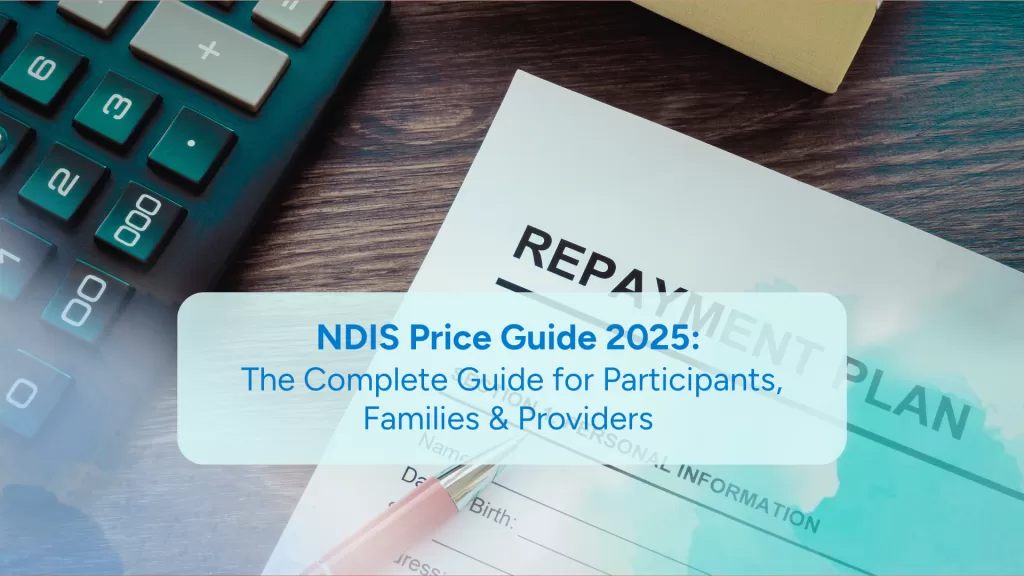Introduction:
Functional Behaviour Assessment (FBA) is a cornerstone of Positive Behaviour Support (PBS), providing the essential insights needed to understand and address challenging behaviours. By identifying the underlying causes or functions of these behaviours, FBA allows professionals to develop targeted, effective interventions that promote positive change. This blog will explore the process of conducting an FBA, its importance in PBS, and how it forms the foundation for creating successful behaviour support plans.
What is Functional Behaviour Assessment (FBA)?
Defining FBA:
Functional Behaviour Assessment is a systematic process used to identify the reasons behind challenging behaviours. The goal of FBA is to determine the function or purpose that a behaviour serves for an individual, such as gaining attention, avoiding a task, or fulfilling a sensory need. Understanding the function of a behaviour is crucial for developing effective interventions that address the root cause rather than just the symptoms.
Historical Background:
FBA has its roots in applied behaviour analysis (ABA) and has been used for decades as a tool to understand and modify behaviours. Over time, it has become an integral part of PBS, helping to create more holistic and person-centred support plans.
Types of Functions:
Attention-Seeking:
Behaviours that are intended to gain attention from others, whether positive or negative.
Escape or Avoidance:
Behaviours that help an individual avoid or escape from an unpleasant situation, task, or environment.
Access to Tangibles:
Behaviours that are aimed at obtaining a desired object or activity.
Sensory Stimulation:
Behaviours that provide sensory input, which may be calming or stimulating for the individual.
Why FBA is Essential:
Without understanding the function of a behaviour, interventions are likely to be ineffective or even counterproductive. For example, if a behaviour is driven by a need for attention, simply ignoring the behaviour may not work unless an alternative way to gain attention is provided. FBA ensures that interventions are tailored to the individual’s needs and are more likely to result in positive, lasting change.
The FBA Process
Step 1:
Identifying and Defining the Behaviour
The first step in conducting an FBA is to clearly identify and define the challenging behaviour. This involves describing the behaviour in specific, observable terms, such as “throwing objects” or “yelling during class.” It’s important to be as precise as possible to ensure that everyone involved in the assessment understands exactly what behaviour is being targeted.
Step 2:
Gathering Data
Data collection is a critical component of FBA. This step involves observing the individual in various settings and situations to gather information about when and where the behaviour occurs, who is present, and what happens before and after the behaviour. Data can be collected through direct observation, interviews with the individual and those who know them well (such as family members or teachers), and reviewing any relevant records or reports.
Step 3: Analyzing the Data Once the data has been collected, the next step is to analyze it to identify patterns and possible triggers for the behaviour. This analysis helps to generate hypotheses about the function of the behaviour. For example, if the behaviour consistently occurs during specific activities or when certain people are present, it may be related to seeking attention or avoiding those activities or people.
Step 4:
Formulating a Hypothesis
Based on the data analysis, a hypothesis is formed about the function of the behaviour. This hypothesis guides the development of the intervention plan. For instance, if the hypothesis is that the behaviour is motivated by a desire to avoid difficult tasks, the intervention might involve providing additional support during those tasks or finding ways to make the tasks more manageable.
Step 5:
Developing an Intervention Plan
The final step in the FBA process is to develop an intervention plan that addresses the identified function of the behaviour. The plan should include specific strategies for preventing the behaviour, teaching alternative behaviours, and reinforcing positive behaviours. It should also include methods for monitoring progress and making adjustments as needed.
How FBA Informs Positive Behaviour Support Plans
Tailoring Interventions to the Individual:
The insights gained from an FBA are used to create a personalised PBS plan that is tailored to the individual’s unique needs and circumstances. By understanding the function of the behaviour, professionals can design interventions that are more likely to be effective and sustainable.
Creating Proactive Strategies:
FBA allows for the development of proactive strategies that prevent challenging behaviours before they occur. For example, if the FBA reveals that a behaviour is triggered by sensory overload, the PBS plan might include strategies for reducing sensory stimuli or providing sensory breaks.
Teaching Alternative Behaviours:
One of the key goals of PBS is to teach individuals alternative, more appropriate ways to achieve the same function as the challenging behaviour. For example, if a child’s behaviour is motivated by a need for attention, the PBS plan might include teaching the child how to seek attention in a positive way, such as by raising their hand or asking for help.
Reinforcing Positive Behaviours:
FBA also helps identify the most effective types of reinforcement for the individual. By understanding what motivates the individual, professionals can use positive reinforcement to encourage desirable behaviours and discourage challenging ones.
Real-World Applications of FBA
Case Study 1:
A Student with Disruptive Classroom Behaviour
Michael, a 10-year-old student, frequently disrupted his class by talking out of turn, making noises, and leaving his seat. His teachers struggled to manage his behaviour, and it was affecting his academic performance. An FBA was conducted to identify the function of Michael’s behaviour. The assessment revealed that Michael’s behaviour was primarily attention-seeking, as it occurred most often when the teacher was focused on other students or during independent work time. Based on this information, a PBS plan was developed that included providing Michael with structured opportunities for positive attention, such as being a classroom helper, and reinforcing his use of appropriate ways to gain attention. As a result, Michael’s disruptive behaviours decreased, and his engagement in class activities improved.
Case Study 2:
An Adult with Intellectual Disabilities
Samantha, a 25-year-old woman with intellectual disabilities, exhibited aggressive behaviour towards her caregivers, particularly during transitions between activities. An FBA was conducted to understand the triggers and functions of her behaviour. The assessment showed that Samantha’s aggression was often linked to anxiety about changes in her routine and a lack of understanding about what was happening next. The PBS plan developed for Samantha included providing her with visual schedules to help her understand the daily routine, offering choices to increase her sense of control, and using positive reinforcement for calm behaviour during transitions. Over time, Samantha’s aggression decreased, and she became more comfortable with changes in her routine.
Challenges and Considerations in Conducting FBA
Ensuring Accuracy and Objectivity:
One of the challenges in conducting an FBA is ensuring that the data collected is accurate and objective. This requires careful observation and documentation, as well as input from multiple sources to avoid bias. It’s important to remain objective and avoid making assumptions about the behaviour without evidence.
Collaborating with Families and Caregivers:
FBA is most effective when it involves collaboration with families, caregivers, and other professionals who know the individual well. Their insights and observations are invaluable in understanding the context of the behaviour and ensuring that the intervention plan is feasible and consistent across different settings.
Addressing Complex Behaviours:
Some behaviours may have multiple functions or be influenced by a combination of factors, making them more complex to assess and address. In such cases, it may be necessary to conduct a more in-depth assessment and develop a multi-faceted intervention plan.
Ongoing Monitoring and Adaptation:
Behaviours can change over time, and the function of a behaviour may evolve as the individual’s needs and circumstances change. It’s important to monitor the individual’s progress regularly and adapt the PBS plan as needed to ensure continued effectiveness.
The Role of FBA in Preventing Behavioural Crises
Proactive Intervention:
One of the most significant benefits of FBA is its role in preventing behavioural crises. By understanding the function of a behaviour and implementing proactive strategies, it’s possible to prevent challenging behaviours from escalating to a crisis level. This not only improves the individual’s quality of life but also reduces the stress and burden on families and caregivers.
Case Study:
Preventing a Behavioural Crisis
Tom, a 15-year-old with autism, had a history of severe meltdowns, particularly in crowded or noisy environments. An FBA was conducted to identify the triggers and functions of his meltdowns. The assessment revealed that Tom’s meltdowns were often triggered by sensory overload and a lack of control over his environment. The PBS plan developed for Tom included strategies for managing sensory stimuli, such as wearing noise-cancelling headphones and using a sensory toolkit, as well as providing him with choices and control over his activities. By addressing these triggers proactively, Tom’s meltdowns became less frequent and less severe, greatly improving his quality of life and reducing the need for crisis interventions.
“Functional Behaviour Assessment is the key to unlocking the mystery of challenging behaviours and creating effective, positive interventions.” – Affective Care













